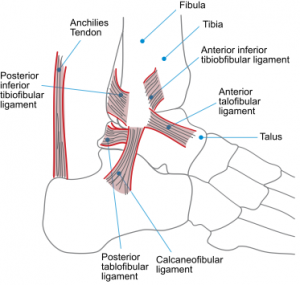As sports physiotherapists we regularly assess and treat patients and athletes with shoulder instability. It has been suggested that glenohumeral instabllity affects up to 2% of the general population (Ahlgren et al., 1978). However, we know that posterior instability is much less common accounting for somewhere between 2 and 10% of these cases (Tannenbaum & Sekiya, 2011). The reason why it is important for use is that these presentations are most common in athletes, secondary to either overuse or a traumatic episode. This makes knowledge of evidence based management and diagnosis of posterior shoulder instability particularly pertinent.

Most of you guys would know that I am a massive fan of good old fashioned, pull your socks up, fine tuned communication with patients. I am certain that the better you communicate with your patients the better their outcomes will be. We have discussed the importance of great communication previously, its importance in improving your patient rapport, improving patient compliance or even improving your application of Mobilisation with Movement techniques. In this post I want to discuss a technique that many of us sports physiotherapists would use on a daily basis to improve our communication with patients; the mighty analogy.
In this episode of the podcast I interview Bill Vicenzino. Bill Vicenzino is a Professor from the University of Queensland, and is the Chair in Sports Physiotherapy. He is widely published in peer review journals and is the lead author of a new textbook entitled “Mobilisation with Movement: The Art and The Science”.
 TSP 004: Mobilisation with Movement with Bill Vicenzino [ 25:57 ] Play Now | Play in Popup | Download
TSP 004: Mobilisation with Movement with Bill Vicenzino [ 25:57 ] Play Now | Play in Popup | Download
A muscle haematoma, or “cork” as they are often called, is a common occurrence in many sports. These muscles haematomas are most prevalent in those who participate in contact sports; such as rugby and football (Smith et al., 2006). Quite obviously, this is something that sports physiotherapists will commonly encounter, particularly those involved with the aforementioned sports. This article discusses the evidence based management (well…the best available evidence) for muscle haematomas.

Ankle injuries are a ridiculously common sports injury. Fong et al (2007) found that ankle injuries are the most common injuries in a wide variety of popular sports. It has been suggested that syndesmosis injuries account for about 11% of ankle injuries. Furthermore, ankle syndesmosis injuries (or “high” ankle sprains) have high occurrences during athletic activities, particularly those that involve twisting or cutting activities. Read on for evidence based assessment and diagnosis of ankle syndesmosis injuries.
As sports physiotherapists we devise and implement exercise programs on an exceptionally regular basis. In fact, frequently exercise rehabilitation of our athletes is the important thing that we do (Church & Blair, 2009). Therefore, it is essential that when we prescribe exercises we make decisions that are evidence based. Do you know what number of sets will give your athletes the greatest gains in strength and hypertrophy? This article will tell you.



